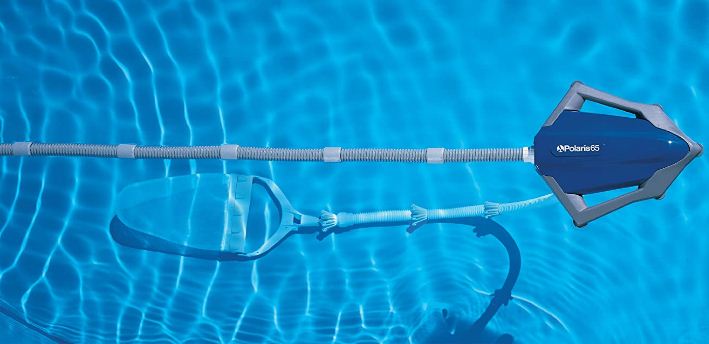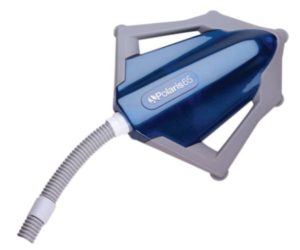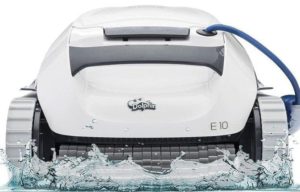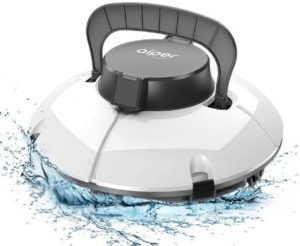Shopping for a budget pool vacuum?
You’ve come to the right place.
Is a Cheap Pool Vacuum Worth It?
It depends on the brand and quality of the pool vacuum. There are many budget pool vacuums commercially available these days that do a great job cleaning your pool.
You can save money on a pool vacuum and still enjoy a clean pool.
What you may miss out on, however, are extra features such as step cleaning, a built-in debris filter, and wall climbing.
With a cheap pool vacuum, expect to do a bit more manual work when it comes to setting it up and its maintenance. You may also need to clean part of the swimming pool yourself, such as the steps and the walls.
Something else to expect with a cheap pool vacuum is that it’ll wear out sooner, i.e., it’s not long-lasting or durable. In fact, most budget brands last around 1-2 years, even with good maintenance. However, while they are still functional, they are great at their job.
What’s In This Buying Guide?
In this buying guide, we review and compare some of the cheapest pool vacuums sold online. We’ve only chosen budget vacuums that are well made, are proven to clean well, and have high customer ratings.
If you are not looking specifically for budget pool vacuums, you can also see our reviews on the best automatic pool cleaners (all price ranges).
Best Budget Pool Vacuums
- 1. Best Suction Vacuum for In-ground Pools: XtremepowerUS Premium
- 2. Best Suction Vacuum for Above Ground Pools: Hayward W3900
- 3. Best Pressure Vacuum For Above Ground Pools: Polaris Vac-Sweep 65
- 4. Best Pressure Vacuum for In-ground Pools: Hayward TriVac 500
- 5. Best for Intex Pools: Intex Auto Pool Cleaner
- 6. Best Manual Pool Vacuum: Milliard See-Thru Pool Vacuum Head
- 7. Best Cordless Rechargeable Pool Vacuum: POOL BLASTER
- 8. Best Robotic Vacuum for Above Ground Pools: DOLPHIN E10
- 9. Best Robotic Vacuum for In-ground Pools: DOLPHIN Proteus DX3
- 10. Best Cordless Robotic Pool Vacuum: AIPER SMART
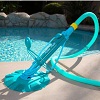
XtremepowerUS
- Best suction for in-ground pools
Max pool size
32’Pool coverage
Floor & wallsMin pump size
1HPWarranty
1yr
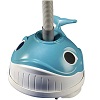
Hayward W3900
- Best suction for above ground pools
Max pool size
32’Pool coverage
Floor onlyMin pump size
1HPWarranty
2yr
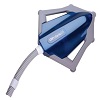
Polaris Vac-Sweep 65
- Best pressure for above ground pools
Max pool size
24’Pool coverage
Floor & wallsMin pump size
1HPWarranty
2yr
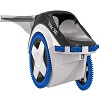
Hayward TriVac 500
- Best pressure for in-ground pools
Max pool size
40’Pool coverage
Floor & wallsMin pump size
Booster pumpWarranty
1yr
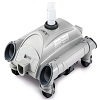
Best for Intex pools
- Best for Intex pools
Max pool size
24’Pool coverage
FloorMin pump size
1600-3500 GPHWarranty
No warranty
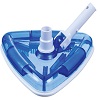
Milliard vacuum head
- Best manual
Max pool size
: All sizesPool coverage
FloorMin pump size
AnyWarranty
No warranty

Pool Blaster Catfish Ultra
- Best cordless rechargeable
Max pool size
All sizesPool coverage
FloorMin pump size
NoneWarranty
1yr
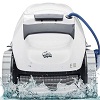
Dolphin E10
- Best robotic for above ground pools
Max pool size
30’Pool coverage
FloorMin pump size
NoneWarranty
2yr
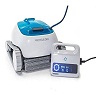
Dolphin DX3
- Best robotic for in-ground pools
Max pool size
33’Pool coverage
Floor & wallsMin pump size
NoneWarranty
2yr

AIPER SMART
- Best cordless robotic
Max pool size
538 sfPool coverage
FloorMin pump size
NoneWarranty
1yr
Suction side vacuums are the most affordable automatic pool vacuums. One of the cheapest ones is the XtremepowerUS Premium suction vacuum.
XtremepowerUS is a cheaper alternative to the popular but pricier Pentair KreepyKrauly.
Pros
- Cleans just as well as a KreepyKrauly.
- Full pool coverage - floor and walls.
- Great value for money.
Cons
- Takes time to set it up properly.
- You need to clean the pool filter frequently.
- Wears out quickly.
Our Review
If you want the best suction side pool vacuum that cleans great, is easy to maintain and is guaranteed to last a long time, get the Pentair Kreepy Krauly.
But if you want a cheap suction pool vacuum that still cleans great, we recommend the XtremepowerUS suction cleaner.
It uses the same flat seal design as the KreepyKrauly. Once you connect it to your pool’s suction port, it flops around on the pool floor and walls, sucking up debris through the hose.
As long as you’ve set it up properly, the XtremepowerUS cleaner has strong suction. It easily picks up all kinds of debris from the pool.
It is especially good at picking up small and medium-size debris like pollen, algae, sand, and dust. It’ll also pick up larger debris like leaves, but these clog the cleaner quickly.
Ideally, you should skim out the leaves and other large debris before putting the XtremepowerUS cleaner in.
The XtremepowerUS suction cleaner comes with everything you need to set it up, including 10 hose sections (30’ total length for pools up to 32’ long).
You’ll need a minimum of 1 HP or 1600 GPH pool pump for the XtremepowerUS cleaner to generate adequate suction and clean well.
Issues & Limitations
While the XtremepowerUS cleaner cleans as well as the KreepyKrauly, it has some limitations that are expected at this price point.
For one, it’s more challenging to set it up properly. You have to tweak the spring, diverter valve and other components several times to get the cleaner to move and suck inthe debris.
The XtremepowerUS also requires regular maintenance since it clogs easily, especially if it picks up large debris. After every cleaning, you need to open up the flapper to remove stuck debris.
You’ll also need to clean the pool filter at least once a week. Unlike pressure and robotic vacuums that pick up and hold debris, the XtremepowerUS suction cleaner directs all of it to the pool filter.
The other issue is longevity. Most users started seeing signs of wear and tear after just 1-2 years. In contrast, the KreepyKrauly usually easily lasts around 5 years.
Bottom Line
#2
Best Suction Vacuum for Above Ground Pools
If you have an above-ground pool, we recommend the Hayward W3900 Wanda the Whale suction cleaner.
It’s designed specifically to clean above-ground pools gently (to prevent damage to the vinyl) but effectively.
Pros
- Excellent cleaning performance
- Low price
- Easy to set up
- Picks up most debris
Cons
- Requires a powerful pump.
- Doesn't pick up leaves - you’ll need a leaf catcher.
Our Review
Wanda the Whale cleans all shapes and sizes of above-ground pools up to 32 feet long.
It connects to your pool’s suction or skimmer port and uses the force of water leaving the pool to suck debris from the pool floor.
Like other suction cleaners, the Hayward W3900 excels at picking up small debris like sand and algae. Remember to backwash your pool filter often to keep the cleaner working properly.
Setting up the Hayward W3900 is easy and quick. It includes 32’ of hose sections, so you can clean a pretty big above-ground pool.
You also get a couple of accessories to make it easier to set up the cleaner properly.
The first is a flow gauge that you use to check if your pool pump has adequate suction. The second is a regulator valve that you use if your pump is too powerful.
Once you set up the W3900, it doesn’t need much tinkering, unlike the XtremepowerUS cleaner. It works a bit slow, but it’ll eventually clean the entire floor. You just need to keep the pool filter clean.
Issues & Limitations
Do not use Wanda the Whale if your above-ground pool is chock full of leaves. Even small leaves quickly clog the cleaner.
Skim out the leaves before putting the Hayward cleaner in. It’ll pick up the remaining small debris.
The other issue is its pump size requirements. The Hayward W3900 requires a minimum of 1 HP pump. Otherwise, it won’t move or suck the debris.
The Hayward W3900 is best for: Above ground pool owners looking for an affordable suction pool cleaner.
Avoid if: You struggle with leaves in your pool. Get a robotic or pressure-side cleaner instead.
Bottom Line
The Hayward W3900 is best for: Above ground pool owners looking for an affordable suction pool cleaner.
Avoid if: You struggle with leaves in your pool. Get a robotic or pressure-side cleaner instead.
#3
Best Pressure Vacuum For Above Ground Pools
Pressure vacuums are pricier than suction cleaners, but you can still get some affordable ones. The cheapest one we found for above-ground pools is the Polaris Vac-Sweep 65.
It’s designed to safely clean vinyl above-ground pools that are up to 5 feet deep. It doesn’t connect to your pool filter, making it a good choice if you don’t want to burden your filter system.
Pros
- Doesn't connect to the pool filter - increases filter life
- Picks up leaves and other large debris.
- Cheaper than most pressure vacuums
- Easy to set up
Cons
- Doesn't pick up fine debris
Our Review
The Polaris Vac-Sweep 65 pressure cleaner connects to your pool’s return line. The force of the returning water pushes the cleaner around the pool.
As the cleaner moves, it produces jets of water from a sweeper tail. These jets loosen debris and algae from the pool floor and the wall. They then blow the debris into a bag secured to the end of the tail.
Because the Polaris Vac-Sweep 65 doesn’t direct this debris to your pool filter, you don’t have to backwash the filter as often. It also lengthens the life of the filter.
Unlike suction cleaners that mostly pick up fine debris, the Polaris Vac-Sweep 65 pressure cleaner mostly picks up leaves and large debris.
The pool filter efficiently removes silt, sand, algae and other small particles.
Set up is relatively easy. You just need to connect the main vacuum, the sweeper tail and the hose lengths. The Polaris Vac-Sweep 65 comes with 24 feet of hose sections, so it can clean above-ground pools up to 24’ long.
The most important thing is to trim the hose and sweeper tail to your pool size. Otherwise, these parts are going to get all tangled up.
Also, you need to make sure the cleaner is moving slowly across the pool floor. Use the pressure relief valve to set the right speed.
Once you’ve set up the cleaner, all you need to do is clean the debris bag and filter screen. You also need to keep your pool filter clean to maintain the right amount of pressure.
Polaris does not specify the minimum pump size required for the Vac-Sweep 65 to work, but we recommend using a minimum 1HP pump.
Issues & Limitations
If you struggle with lots of sand, silt and other fine debris in your pool, the Polaris Vac-Sweep 65 is not for you. It works best for removing leaves and large debris.
Get a suction or robotic cleaner instead
Bottom Line
#4
Best Pressure Vacuum for In-ground Pools
If you have a large in-ground pool, the Hayward TriVac 500 is one of the most affordable pool vacuums.
It wheels around the pool floor and walls and collects large debris like leaves in an attached debris bag.
Pros
- Has its own debris bag - increases pool filter lifespan
- Full pool coverage, including walls
- Picks up most debris
- Cleans large pools
Cons
- Requires booster pump.
- Doesn't pick up fine debris
Our Review
With the included 34 feet of hose sections, the Hayward TriVac 500 can handle large in-ground pools up to 40 feet long.
It connects to your pool’s return line and uses water pressure from your pool pump to create powerful venturi jets that pick up debris.
It also uses water jets to propel itself on wheels around the pool. The AquaDrive system, combined with the non-slip wheels, allows the Hayward TriVac 500 to move easily across the floor and scale the pool wall for full cleaning coverage.
The TriVac 500 comes with an attached debris bag, so your pool filter doesn’t have to work as hard. It also eases filter maintenance, reducing how often you need to backwash it.
The debris bag is extra-large to reduce how often you need to empty it.
Setup is easy and straightforward. The only thing you need that’s not included is a booster pump.
Issues & Limitations
The TriVac 500 is cheaper than most other in-ground pool vacuums. But when you add the cost of a booster pump – which you must buy if you don’t already have one – the entire package gets quite pricey.
If you are on a tight budget, consider getting a suction vacuum instead, like the XtremepowerUS cleaner. It’s cheaper and doesn’t need a booster pump.
The other issue with the Hayward TriVac 500 is that it doesn’t pick up fine debris. If your pool gets lots of sand, dust, and algae, you are better off with a suction or robotic cleaner.
Bottom Line
If you have an Intexabove-ground pool, we recommend the Intex Auto pool cleaner. It’s a budget pressure-side cleaner explicitly designed for Intex pools up to 24’ long.
Pros
- Works with all Intex pools up to 24’
- Picks up large debris like leaves
- Easy to set up
- Includes filter net
Cons
- Doesn't pick up fine debris
- Requires a powerful pump.
- No warranty
Our Review
The Intex Auto Cleaner sweeps and vacuums Intex pools that have a 1½” connector and a max length of 24 feet.
It is a pressure-side cleaner, so it connects to the return port of your Intex pool. The pressure of returning water produces jets that propel the Auto cleaner and picks up large debris.
The Intex Auto cleaner has a filter net to catch leaves and other debris so that it doesn’t clog your cartridge or sand filter.
It also includes micro brushes on the underside that scrub the pool floor to loosen algae and other fine debris so it can be picked up by the pool filter.
Setting up the Intex Auto cleaner is easy. All you need to do is trim the hose to the correct size (check the manual) and connect it to the return port.
As for maintenance, you only need to occasionally empty and clean the filter net.
Issues & Limitations
Similar to other pressure pool vacuums, the Intex Auto cleaner doesn’t pick up fine debris. It only agitates and loosens it but then leaves your pool filter to pick it up.
If your Intex pool gets lots of sand and fine debris, you’ll need to backwash or clean your pool filter frequently.
The other issue with the Intex Auto cleaner is that it needs a high flow rate pump for optimum performance.
Intex recommends using a pump between 1600 and 3500 GPH.
Most small Intex pools come with underpowered filter pumps, typically the 1000 GPH Krystal Clear cartridge filter pump.
We recommend upgrading to the 2500 GPH Krystal Clear Cartridge Filter Pump or the 2100 GPH Krystal Clear Sand Filter Pump.
Another thing to note is that the Intex Auto Cleaner doesn’t come with a warranty.
Bottom Line
If you want the cheapest pool vacuum you can find, get a hand-operated pool vacuum head. One of the highest-rated ones is the Milliard See-Thru Pool Vacuum Head.
It has a see-through body that makes it easier to see where you are vacuuming.
Pros
- Cheaper than automatic pool vacuums
- See-through body for easier cleaning and maneuverability
- Includes nylon brushes to sweep and direct debris
- Wide cleaning surface for faster vacuuming
- Triangular shape reaches dirt in crevices and rounded corners
Cons
- Lack of wheels can make it hard to push
- Requires additional accessories
Our Review
If you don’t mind manually scrubbing and vacuuming the pool, a handheld pool vacuum is the cheapest option.
The Milliard vacuum head attaches to a telescopic pole and a suction hose. You then push it around the pool.
The see-through plastic body makes it easy to see where you are cleaning. You can also spot debris under the cleaner.
As you move the vacuum head along the floor, it uses your pool pump’s suction to pull debris through the connected hose and towards the pool filter.
Unlike automatic suction vacuums that only pick up fine debris, the Milliard vacuum head sucks everything from fine sand to leaves and dead bugs. Just remember to clean your pool filter regularly.
The rounded triangular shape of the Milliard vacuum head makes it much easier to get debris hiding in rounded corners and crevices.
Another feature we love is the series of nylon brushed under the Milliard vacuum head. They scrub grime and algae stuck on the pool surface, making it easier for the vacuum to suck the debris into the hose.
Other great features include weights to keep the vacuum head on the pool floor, side rubber bumpers to protect the pool lining and a 2-in-1 1½ and 1¼ inch connector to fit different hose sizes.
Issues & Limitations
The Milliard vacuum head requires patience, time and some elbow grease. It doesn’t have the hands-free convenience of an automatic vacuum.
You need to move it slowly to get the best results, making pool cleaning a time-consuming and tedious task.
It doesn’t help that the Milliard vacuum head lacks wheels. Instead, it moves on brushes. This makes it harder to push it across the pool floor. Forget about trying to move it along the walls.
Also, keep in mind that the Milliard vacuum head requires additional accessories, including an extension pole and a suction hose.
Bottom Line
#7
Best Cordless Rechargeable Pool Vacuum
If you don’t want the hassle of connecting a hose to the pool vacuum, we recommend a rechargeable pool vacuum. The best one for your money is the Pool Blaster Catfish Ultra.
It is battery-powered and can vacuum your pool for up to 45 minutes continuously. According to pool owners, it has better suction than hose-connected vacuums.
Pros
- Powerful suction
- Picks up both large and fine debris
- Long runtime
- Includes scrubbing brushes.
Cons
- Requires manual maneuvering
- The included pole is short and flimsy
Our Review
The Pool Blaster Catfish Ultra is an upgrade from manual pool vacuums.
You still have to steer the vacuum head manually across the pool floor, but you don’t have to connect the vacuum to the pool’s suction or return port. The Pool Blaster generates its own suction using a lithium battery.
This makes setting up the cleaner much easier.
The Pool Blaster is also easier on your swimming pool since you don’t have to turn on the pool pump every time you vacuum the pool. It also comes with a filter bag, so your pool filter doesn’t have to work as hard.
But the biggest advantage of a battery-powered pool vacuum is suction power. The Pool Blaster beats most hose-connected pool vacuums when it comes to suction.
The increased suction allows it to pick up all sorts of debris, from leaves and bugs to sand and silt. The vacuum head includes brushes to loosen algae and grime from the pool floor for better vacuuming.
An attached filter bag captures all this debris, and it’s fairly easy to clean it afterwards.
Set up the Pool Blaster, make sure it’s fully charged,and attach the included extension pole. The pole is 3.7’ long, but you can also use any standard telescopic pole if you want a longer reach.
The lithium battery gives you about 45 minutes of continuous runtime. If you spend just a few minutes each day vacuuming the pool, you can use the Pool Blaster 2-3 times before you need to recharge it.
Issues & Limitations
If you prefer the hands-free convenience of an automatic pool vacuum, the Pool Blaster Catfish Ultra is not for you.
The battery only replaces the suction hose, so you still have to push the vacuum by hand.
Another issue is the pole that comes with the Pool Blaster vacuum. It’s too short (just 3.7 feet) for most pools. It’s also flimsy. Fortunately, the Pool Blaster vacuum is compatible with standard pool poles.
Bottom Line
#8
Best Robotic Vacuum for Above Ground Pools
Robotic vacuums are pricier than suction and pressure vacuums, but they are easy to use, don’t rely on your pool pump and filter, and most clean the pool really well.
Our favorite budget robotic vacuum for above-ground pools is the Dolphin E10. It scrubs and vacuums above ground pools up to 30′ long.
Pros
- No setup is needed
- Self-contained with its own power and filter
- Easy to clean top-load filter basket
- Saves energy
Cons
- Costs more than other automatic vacuums
- Doesn't clean walls.
- You’ll need to buy an ultra-fine filter separately.
Our Review
While a robotic vacuum like the E10 costs more than a pressure or suction vacuum, it actually saves you money in the long run.
That’s because it’s completely self-contained. It doesn’t connect to your pool pump;thus, you don’t need to keep the pump during vacuuming. This saves power.
It also doesn’t direct debris to your pool filter, meaning it lasts longer and requires less maintenance.
The best part is that the Dolphin E10 cleans better than other vacuums. It generates plenty of suction and easily picks up debris. It also includes a high-speed scrubber that loosens algae and grime from the pool floor.
A large filter basket captures the debris. Once the E10 is done cleaning, it’s easy to pop off the top-loading basket and spray it clean.
The other great thing about the E10 is that it doesn’t require any setup – no hoses and no valves to adjust. Just plug in the power station and put the cleaner in the water.
It takes just 90 minutes to clean the pool.
Issues & Limitations
The main issue with the Dolphin E10 is the price. It’s one of the cheaper robotic vacuums but still significantly more expensive compared to suction and pressure vacuums.
The other issue is that you need to buy an ultra-fine filter separately if you want your pool to get really clean.
The fine stock filter included with the vacuum is good for most debris except fine particles like sand and silt.
Bottom Line
#9
Best Robotic Vacuum for In-ground Pools
The most affordable robotic vacuum for in-ground pools is also from Dolphin. The Dolphin Proteus DX3 cleans in-ground pools up to 33’.
Though more expensive than other types of pool vacuums, it uses less energy and increases the lifespan of your pool filter.
Pros
- Excellent cleaning performance.
- Fully self-contained.
- Energy-efficient
- Weekly scheduler
- Large filter basket
Cons
- Pricier than other types of pool vacuums
- Struggles with steps.
Our Review
The DX3 is one of Dolphin’s entry-level in-ground pool cleaners. It doesn’t have some of the advanced features of pricier models like the Dolphin Nautilus CC, but it cleans just as well.
The DX3 navigates around the pool on tracks, easily traversing over drains and going up the pool walls.
It cleans the pool with a combined scrubbing and vacuuming action. A high-speed scrubber loosens dirt and algae while suction vacuums up debris into a large filter basket.
The basket captures most debris, including leaves, insects and large particles. But to get everything, including fine sand and silt, you’ll need to upgrade to an ultra-fine filter.
Unlike debris bags that were common in older Dolphins, the basket in the DX3 is easy and quick to clean. A quick spray with a hose is enough to remove all debris.
The Dolphin DX3 comes with a weekly scheduler that lets you set the vacuum to automatically clean the pool every day, every other day or every third day.
Similar to other robotic vacuums, the Dolphin DX3 is plug-and-play. You don’t need hoses or a booster pump since it is self-contained.
This not only makes it easier to use, but it also saves money since you don’t need to turn on the pool pump as often, and the pool filter lasts longer.
Issues & Limitations
If you are on a tight budget, the Dolphin DX3 is probably not what you are looking for. A suction or pressure vacuum will be much cheaper.
The other issue with the DX3 is that it struggles with steps. It’ll clean all other areas, including the walls, but will often vacuum only the first one or two steps.
Also, note that the DX3 is limited to standard size residential pools up to 33’ long. If you have an extra-large pool, get the pricier Dolphin DX4 that can clean pools up to 50 feet long.
Bottom Line
If you want the convenience of a cordless robotic pool vacuum, we recommend the AIPER SMART Cordless Automatic Pool Cleaner.
It cleans above and in-ground pools up to 538 sq. ft. and can run continuously for 50 minutes.
Pros
- Cordless - no cables to deal with
- Cleans both above-ground and in-ground pools
- Lightweight and easy to handle
- Excellent cleaning performance
- Cheaper than corded robot vacuums
Cons
- Not suitable for extra large pools
- Works best on flat-bottomed pools
- Doesn't clean walls
Our Review
The Aiper cordless vacuum saves you the hassle of dealing with cables. You don’t have to worry about having a power outlet nearby or a cable getting tangled.
The Aiper vacuum has an internal battery that drives the cleaner and generates suction to vacuum debris. It also comes with a pair of brushes to loosen debris and algae.
A filter tray captures most of the debris, including fine particles as small as 2 microns. This means the cleaner picks up everything from leaves and bugs to sand and algae.
The tray is easy to remove and clean with a garden hose.
The Aiper pool vacuum has a run time of 50 minutes. That’s enough time to clean a pool with a max area of 538 sq. ft. That covers most residential pools up to about 33’ long.
When the battery is almost dead, or the cleaning cycle is complete, the Aiper cleaner automatically docks along the pool wall. You can then retrieve it using the included hook.
The Aiper cordless pool cleaner, even with the battery, weighs only 6.6lbs. So, it’s easy to lift it out and carry it around.
Issues & Limitations
Your pool needs to have a flat smooth bottom for the Aiper cleaner to work properly. Folds, floor features, or any unevenness limits the cleaner’s movements.
Another thing to note is that the Aiper smart cleaner doesn’t clean walls. You have to scrub those yourself.
Bottom Line
The Aiper Smart Cordless pool cleaner is best for: Pool owners looking for an affordable cordless robotic pool vacuum.
Avoid if: You have an extra-large pool. Upgrade to the more powerful AIPER SMART 1000 cordless cleaner with a 90-minute run time and maximum coverage of 861 sq. ft.
Budget Pool Vacuum Buying Guide
What to Look For in a Budget Pool Vacuum

Even though a budget pool vacuum may not be as powerful or as capable as a pricier one, there are still some important features you should not compromise on.
Here’s what to look for when shopping for a budget pool vacuum and how to choose the right one for your pool.
1. Type of Pool Vacuum
The first thing to decide is the kind of pool vacuum you want. Here are the four main types.
- Hand-operated – These are vacuum heads that work with a telescopic pole and a suction hose. Hand-operated pool vacuums are the cheapest, but they are tedious and time-consuming to use.
- Suction – Suction vacuums connect to the skimmer/suction port of your pool, using the suction force of the pool pump to move around the pool and suck the debris. They are cheap and are great for picking up fine debris. On the downside, they don’t do well with large debris, they clog easily, and they rely on your pool pump and filter.
- Pressure – Pressure vacuums connect to the return port of your pool and use the force of returning water to create jets that push the cleaner around and pick up debris. Pressure vacuums are great for large debris like leaves, and they don’t rely on your pool filter. On the downside, they are pricier and still rely on your pool pump.
- Robotic – Robotic vacuums are self-contained. They have their own propulsion system and filter basket. They are pricey but save you money in the long run on electricity consumption and filter maintenance. They are also super easy to set up and maintain.
There are two additional types of pool vacuums, both battery-powered.
The first type is cordless hand-operated vacuums. You move it around with a pool pole, but it generates its own suction to pick up debris.
The second type is a cordless robotic vacuum. It generates its own propulsion and suction using an internal battery and motor.
2. Type of Pool & Pool Size
Check the type of pool the vacuum is recommended for. There are vacuums specifically for above-ground pools, for in-ground pools, and others that are suitable for both types of pools.
Also, check the max size or length of the pool that the vacuum can handle.
3. Set Up and Pump Requirements
If you want a pool vacuum that’s super easy to set up, we recommend you get a cordless or robotic vacuum.
Suction, pressure and hand-operated vacuums need hose connections. Others require constant tweaking of valves and other components to get the cleaner working right.
Something else to check with a suction or pressure vacuum is the minimum pump size you need to have. An undersized pump can keep the vacuum from moving and picking up debris.
4. Pool Coverage
Check which areas of the pool the vacuum cleans. The best vacuums clean both the floor and walls.
But many budget vacuums are floor-only, which means you have to manually scrub the pool walls, which can be both laborious and time-consuming.
Also, check if the vacuum can clean challenging areas like corners, steps, and cove.
5. Cleaning Performance
Check how well the pool vacuum cleans. There are several things to consider here.
- Scrubbers/brushes – A vacuum with brushes or scrubbers does a much better job cleaning the pool. It is especially effective against algae.
- Debris pickup – Does the vacuum pick up all or only some debris? Pressure and suction vacuums pick up only one type of debris (large or fine), while robotic and cordless vacuums pick up all kinds of debris.
- Filtration size – The kind of debris the vacuum picks up depends on the filter size. Some filters only capture large debris like leaves and bugs, while others can get even the smaller stuff like sand and silt.
6. Maintenance
Finally, check the maintenance requirement of a particular vacuum.
We love robotic vacuums because they are the easiest to maintain. Most come with a filter basket that’s easy to clean with a garden hose.
Suction vacuums tend to be the most difficult ones to maintain. They clog easily, and you have to remove trapped debris constantly.
They also require you to clean the filter quite often. That’s because they remove debris through the pool filter (thus clogging it up quickly), and they need a clean filter to maintain adequate suction.
Budget Pool Vacuums: Pros and Cons

Pros
- Affordable (obviously)
- Many have great cleaning performance
- Wide range of options to choose from for all kinds of pools
- Most offer good value for money
- Cheaper than corded robot vacuums
Cons
- Most don't last as long as pricier vacuums
- They typically clean smaller pools
Budget Pool Vacuum: Frequently Asked Questions

Can you leave a pool vacuum in the pool?
Yes, most pool vacuums (except cordless ones) can be left in the pool for a few days. Remove the vacuum when swimming or adding chemicals.
What can I use if I don’t have a pool vacuum?
Use a nylon brush to scrub the sides and bottom of a pool, then leave the pool filter to remove the loosened debris.
If you have large leaves and dead bugs in the pool, use a net to skim them out. This will keep your pool filter from clogging.
Read our full guide on how to clean your swimming pool.
How long do budget pool vacuums last?
It depends on the brand, build quality and how well you maintain the vacuum. Most low-cost pool vacuums have an average lifespan of 1-2 years. But some, such as Dolphin robot vacuums, can last up to 5 years.
Final Verdict: What is the Best Budget Pool Vacuum Sold Today?
After carefully reviewing so many budget-friendly pool vacuums, we have concluded that the XtremepowerUS Premium is the best budget suction pool vacuum available in the market for in-ground pools.
The Hayward TriVac 500, on the other hand, is the best budget pressure pool vacuum, whereas the Dolphin DX3 is the best budget robotic pool vacuum.
Similarly,, the Hayward W3900 is the best budget suction vacuum for above-ground pools, the Polaris Vac-Sweep 65 is the best budget pressure vacuum, and the Dolphin E10 is the best budget robotic vacuum.

